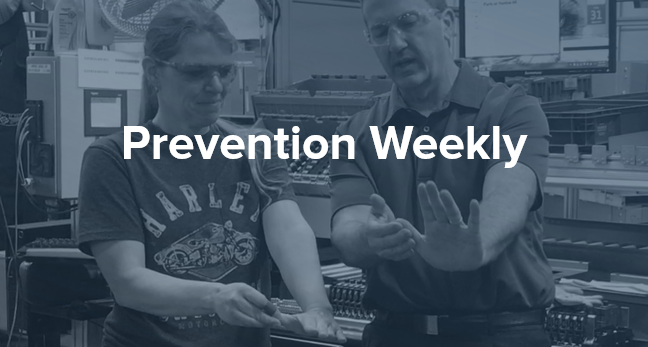Prevention Weekly delivers the best ergonomics, workplace athlete health, and safety leadership news right to your inbox every week.
Featured Article
Workplace Athletic Trainers: A Safer Approach to Work and Life
Forward-thinking safety teams are achieving better health outcomes by partnering with highly qualified and multi-skilled healthcare professionals — Athletic Trainers.
Workplace Athletic Trainers: A Safer Approach to Work and Life
Ergonomics
How to Conduct an Effective Ergonomic Risk Assessment
Conducting an ergonomic assessment is a foundational element of the ergonomics process. Your ergonomics improvement efforts will never get off the ground without being able to effectively assess jobs in your workplace for musculoskeletal disorder (MSD) risk factors.
How to Conduct an Effective Ergonomic Risk Assessment
Office Ergonomics: A Six-Point Checklist to Correctly Position Your Computer Monitor
Positioning your computer monitor correctly is an important part of arranging your computer workstation. A poorly positioned monitor could introduce awkward and uncomfortable postures which can eventually lead to a painful musculoskeletal disorder (MSD).
Office Ergonomics: A Six-Point Checklist to Correctly Position Your Computer Monitor
Workplace Athlete Health
Employers Role: A Safer Approach to Work, Life, and Sport
Injury prevention is everybody’s job. But as an employer, you have a special responsibility to keep your workers safe. In 2013, the rate of nonfatal workplace injuries and illnesses reported by private industry employers to the Bureau of Labor Statistics was 3.3 cases per 100 equivalent full-time workers.
Employers Role: A Safer Approach to Work, Life, and Sport
The Biggest Problem With U.S. HealthCare
“What is the takeaway here for health? In the U.S., our investment in population health vs. curative care does not come anywhere near the balance struck by our fire preparedness infrastructure. Rather, our investment is deeply lopsided in favor of cure. The argument for greater focus on population health is not a case against this investment; it is a case against this lopsidedness. It stresses that a world with fewer “fires”—less disease—is beneficial to us all, even as we wish to always have well-resourced professionals on hand who can put out fires when they happen, and cure disease when it strikes. Such a world would reflect the high value we place on health, as we pursue wellbeing using every tool at our disposal, with prevention and cure working together to create a safer, healthier society.”
The Biggest Problem With U.S. HealthCare
Safety Leadership
Five Reasons You Have Undesired Performance
Leaders set expectations and manage the influences on them, but some spend too much time managing displeasing results. No effective leader can truly expect perfect performance from every one of their direct reports, one-hundred percent of the time. Those who have unrealistic expectations misunderstand human behavior and its influences, and likely create undesirable work environments. Managing, coaching or counseling undesired performance is an integral part of any leader’s responsibilities. How is this handled in your organization?
Five Reasons You Have Undesired Performance
Ergonomics Plus solutions help proactive safety teams prevent musculoskeletal injuries and advance employee well-being.
